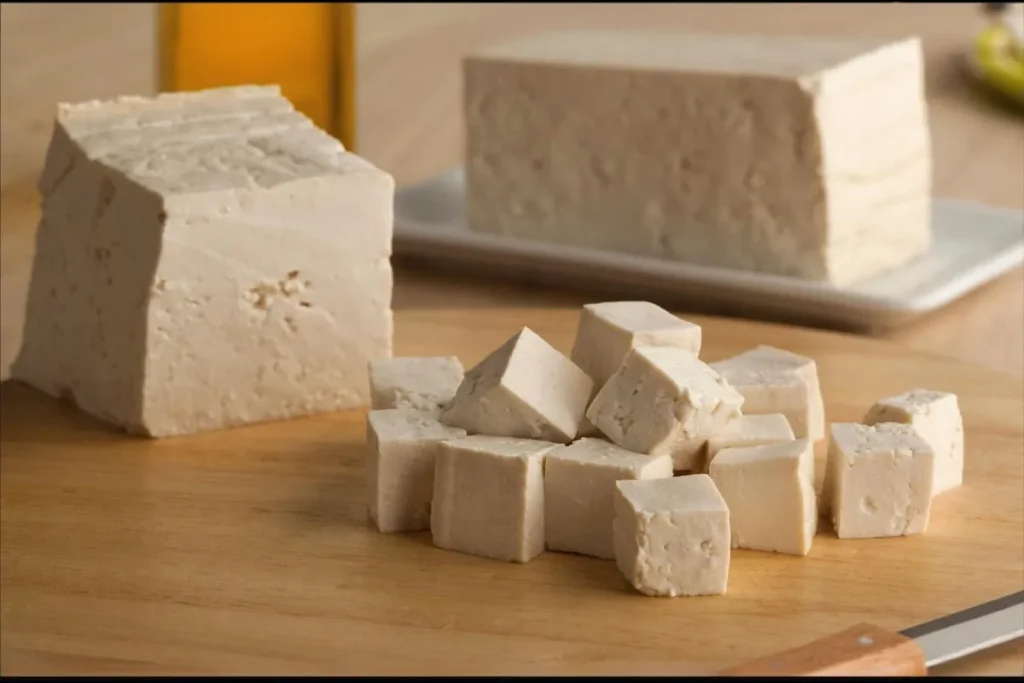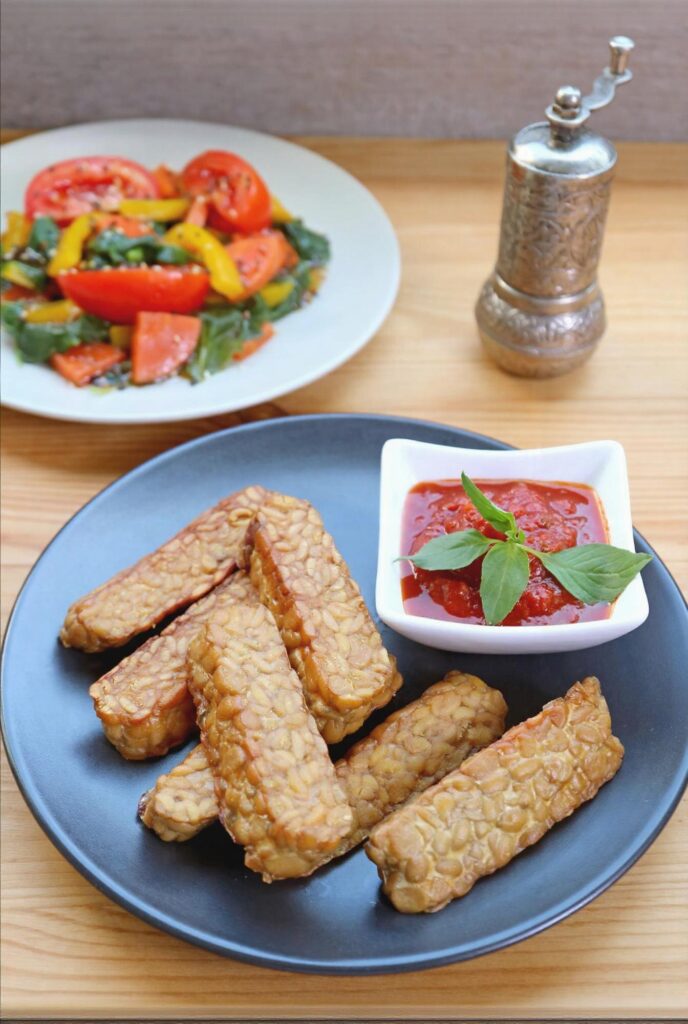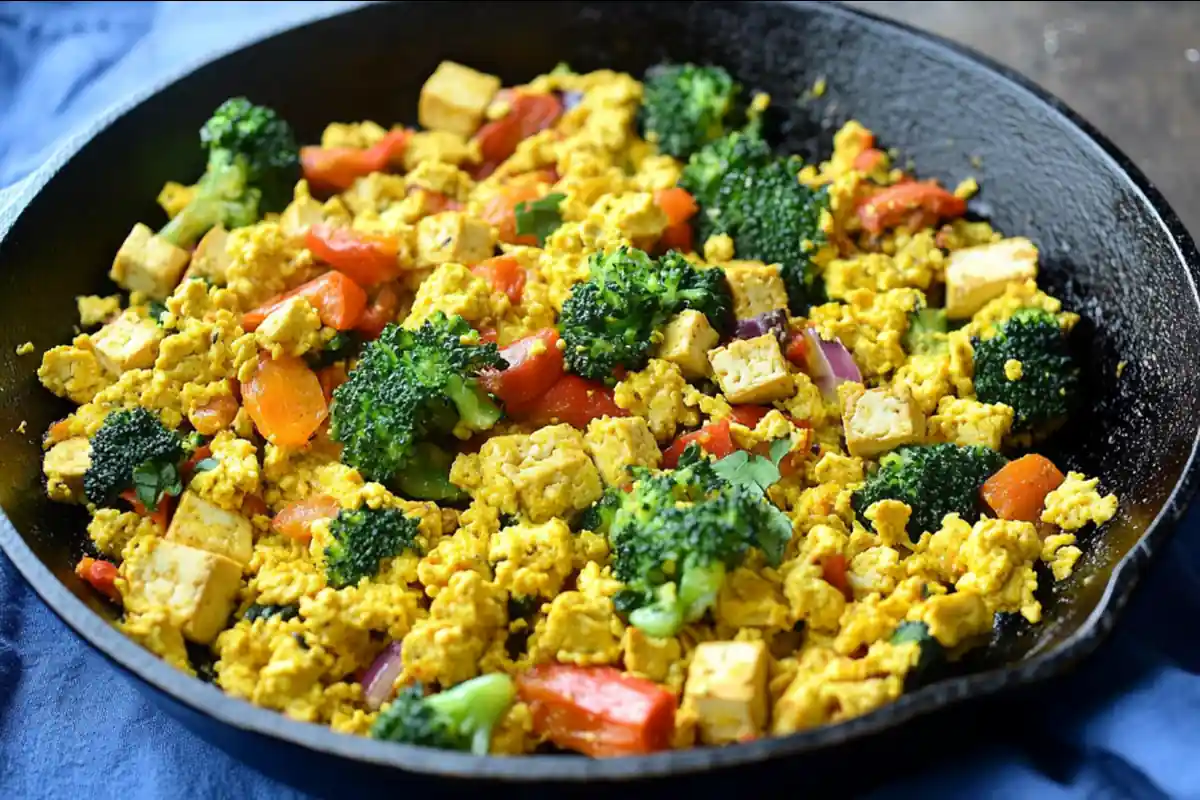Tofu reigns supreme in the vegan world, but there’s so much more to explore. Discover the most popular foods for vegans, their benefits, and a delicious tofu recipe.
Introduction
Veganism is on the rise in the United States, and many people are curious about what vegans actually eat. In fact, “What is the most popular food for vegans?” is a common question. In this guide, we will dive into this topic by discussing tofu—long considered a vegan staple—and explore other plant-based foods beloved by vegans. Additionally, you will learn how to incorporate these tasty ingredients into your own meals, discover their nutritional benefits, and clear up some misconceptions. By the end of this article, you will have the knowledge and confidence to experiment with vegan foods in your own kitchen.
Table of Contents
Why Veganism Is Growing in Popularity
The growing momentum of veganism within the U.S. and worldwide is hardly surprising. More people are turning to vegan diets for ethical, environmental, and health-related reasons. However, the big question that usually arises is this: What is the most popular food for vegans?
Shifting Mindsets and Lifestyle Changes
Consumers are becoming more conscious of how their dietary choices affect both personal health and the environment. Therefore, as supermarkets introduce new plant-based options, more people find it easier to try and adopt vegan-friendly foods. Furthermore, social media trends amplify the reach of recipes and tips, creating communities of vegans who share advice, photos, and success stories.
Health and Wellness Factors
Many individuals adopt a vegan diet to help manage chronic conditions, reduce saturated fat intake, or increase consumption of nutrient-dense whole foods. Moreover, researchers suggest that a well-planned vegan diet can be beneficial for heart health and weight management. It is no wonder more people are curious about top vegan foods, especially protein sources such as tofu, tempeh, and seitan.
Determining the Most Popular Vegan Food
Before we zero in on tofu, it helps to understand the criteria that drive popularity among vegan foods.
Market Trends and Consumer Demand
Major grocery stores and restaurant chains regularly analyze sales data to figure out which products resonate with customers. Consequently, foods that consistently appear on restaurant menus, in social media conversations, or on cooking channels typically earn the label of “most popular.”
Nutritional Value and Accessibility
Being affordable and easy to find are two critical factors in a food’s popularity among vegans. For instance, items like beans or lentils are protein-packed, inexpensive, and available almost everywhere. At the same time, more specialized products like tofu have grown widely accessible thanks to a boom in vegan product lines.
Cultural and Social Influences
Cultural traditions also dictate which plant-based foods receive the most attention. For instance, tofu’s historical roots in East Asia helped it gain recognition in Western markets. In addition, social media campaigns, influencer endorsements, and viral recipes have made tofu extremely popular across the United States.
Unveiling What Is the Most Popular Food for Vegans: Tofu

After examining market trends, nutritional benefits, and cultural impact, tofu often ranks as the most popular food for vegans. But why is tofu so revered among plant-based eaters?
Deep Historical Roots
Tofu has been a staple in East Asian cuisines for centuries. As Asian cuisines became global favorites, tofu followed suit. Eventually, Western health-conscious communities discovered tofu’s adaptability, boosting its popularity far beyond its traditional audience.
Nutritional Powerhouse
Tofu stands out due to its impressive nutrient profile. It contains:
- High-quality protein: This makes tofu ideal for individuals concerned about their protein intake.
- Essential amino acids: Tofu provides several amino acids vital for muscle growth and tissue repair.
- Micronutrients: Tofu is often rich in calcium and iron, depending on how it is processed.
Furthermore, tofu is low in saturated fat and contains no cholesterol, making it even more appealing to health-focused consumers.
Versatility in the Kitchen
One reason tofu dominates among vegan foods is its adaptable texture. Whether you blend it into smoothies, stir-fry it with veggies, or bake it into crispy cubes, tofu easily absorbs flavors from sauces, marinades, and spices. This versatility invites creativity in the kitchen, allowing home cooks to explore everything from tofu scrambles to mouthwatering desserts.
Maximizing Flavor
- Pressing: Removing excess water makes it easier for tofu to absorb marinades.
- Marinating: Marinades infuse the tofu with herbs, spices, and sauces, turning it into a flavorful dish.
- Cooking Techniques: Whether you opt for pan-frying, baking, or grilling, each method transforms tofu’s texture.
Economic and Ethical Factors
Finally, tofu is often cheaper than many plant-based meat alternatives. Therefore, vegans looking to stretch their budget can rely on tofu without sacrificing nutritional quality. In addition, ethically-minded consumers appreciate tofu for its low carbon footprint compared to animal-derived products.
Beyond Tofu: Other Favorite Vegan Foods
While tofu frequently answers the question, “What is the most popular food for vegans?”—it is not alone in the spotlight. Several other foods enjoy significant popularity thanks to their flavors, textures, and nutritional perks.
Tempeh—The Fermented Companion

Tempeh hails from Indonesia, where it has been a staple for centuries. As more people discover its nutty flavor and even higher protein content compared to tofu, tempeh gains ground on grocery store shelves across the U.S. It offers:
- A firm texture suitable for sandwiches or stir-fries.
- Rich probiotic benefits due to the fermentation process.
- An appealing nuttiness that pairs well with many marinades.
Seitan—Wheat Protein with a Meaty Bite
Seitan, made from wheat gluten, boasts a chewy texture that closely resembles chicken or beef. It is especially popular among those who crave hearty vegan dishes such as vegan steaks or sandwiches. However, seitan is not suitable for individuals with gluten sensitivities, yet it remains a star protein choice for many vegans.
Legumes—Beans, Lentils, and Chickpeas
Legumes are arguably the foundation of global plant-based diets due to their affordability, accessibility, and robust nutrient content. Black beans, chickpeas, and lentils feature in Mexican, Indian, and Mediterranean cuisines alike. Moreover, they are known for their:
- High fiber content, supporting healthy digestion.
- Essential minerals like iron and magnesium.
- Adaptability to soups, curries, dips, and salads.
Looking for a hearty dish loaded with legumes? Check out our Dense Bean Salad for a protein-packed lunch idea.
Plant-Based Meats—Innovation in Every Bite
Brands like Beyond Meat and Impossible Foods have revolutionized how vegans (and non-vegans) perceive plant-based alternatives. Their success in mimicking the taste and texture of meat has catapulted them into mainstream fast-food chains. However, it is important to check nutritional labels since some plant-based meats can contain added fats and sodium.
Essential Vegan Staples Beyond Protein
Although protein is a hot topic in vegan nutrition, popular vegan foods include much more than protein-rich items.
Nuts and Seeds
Nuts such as almonds and walnuts, and seeds like hemp or chia, offer healthy fats and additional protein. Their smooth or crunchy textures lend themselves to plant-based cheeses, spreads, or dairy-free milk alternatives. Moreover, they are brimming with micronutrients like vitamin E and omega-3 fatty acids.
Whole Grains
Brown rice, quinoa, oats, and barley constitute nutrient-dense carbohydrate sources for vegans. They provide long-lasting energy and essential minerals. Whole grains also fit seamlessly into many cuisines, serving as a base for stir-fries, salads, and even veggie burgers.
Fresh Produce
Fruits and vegetables form the backbone of any well-rounded vegan diet. Cruciferous veggies (kale, broccoli), root vegetables (sweet potatoes, carrots), and a variety of fruits deliver vitamins, minerals, and antioxidants essential for health. Seasonal, locally sourced produce can also reduce the cost and environmental impact of your meals.
If you are a fan of veggies, be sure to explore these ideas in our Best Vegetables for Roasting article.
Cultural Creativity and Global Adaptations
One of the best parts of a vegan diet is the ability to borrow techniques and flavors from around the world.
Fusion Flavors and Recipe Innovations
As international cuisine becomes more popular, home cooks are more open to exploring spices and cooking styles. For instance, tofu curry offers Indian-inspired flavors, while a tempeh taco could bring Mexican flair to your table.
Dining Out as a Vegan
Dining out used to be challenging for vegans, but now, more restaurants list vegan-friendly items on their menus. Fast-food chains even serve plant-based burger patties. As a result, you can enjoy vegan cuisine in almost any setting.
Global Inspirations for Home Cooks
Additionally, many cuisines—like Thai, Ethiopian, and Indian—already feature plant-forward dishes. Vegans can easily adapt these meals with simple substitutions. For instance, coconut milk replaces cream, and tofu replaces meat in many recipes without sacrificing flavor.
If you need more ideas for lunch, head to our Vegan Lunch Ideas post for fresh inspiration.
Health and Nutrition Considerations
Although the variety of vegan foods is vast, it is essential to meet all nutritional needs when cutting out animal products.
Key Nutrients to Monitor
- Protein: Spread your intake across multiple sources like tofu, tempeh, legumes, and nuts.
- Iron: Combine plant-based iron sources (spinach, lentils) with vitamin C-rich foods (bell peppers, citrus) to enhance absorption.
- Calcium: Opt for fortified plant milks or tofu processed with calcium sulfate.
- Vitamin B12: Many vegans rely on fortified foods or supplements.
- Omega-3 Fatty Acids: Found in flaxseeds, chia seeds, and walnuts.
Weight Management and Heart Health
Studies link well-planned vegan diets to lower rates of obesity, as plant-based meals often include high-fiber foods that promote satiety. Additionally, a diet low in saturated fats can help maintain healthy cholesterol levels.
Balancing Macros and Micros
While focusing on protein is crucial, remember to include fiber-rich carbohydrates and healthy fats. Therefore, build meals around vegetables, grains, beans, and seeds. In doing so, you ensure a diverse profile of macro and micronutrients.
Professional Guidance
It is always a smart move to consult a registered dietitian, especially if you are new to veganism. Regular check-ups and blood work can help detect any deficiencies before they become problematic.
Myths and Misconceptions About Vegan Diets

Despite veganism’s surging popularity, misconceptions still abound.
Protein Deficiency Concerns
One of the oldest myths about vegan diets is that it is impossible to get enough protein. However, tofu, tempeh, seitan, legumes, and nuts each offer significant protein. When combined over the course of a day, they easily meet recommended protein levels.
Bland or Boring Food
Some assume vegan dishes lack flavor. In reality, abundant spices, herbs, and cooking techniques transform plant-based ingredients into delicious meals.
Cost and Accessibility
Though specialized vegan items like plant-based meats can be pricey, basic staples such as grains, beans, and vegetables are often cheaper and widely available.
Nutritional Shortfalls
Vitamin B12, iron, and calcium are commonly cited concerns. However, fortified foods and supplements help resolve these gaps. Many everyday foods, like non-dairy milks, cereals, and nutritional yeast, are enriched to address these needs.
A Delicious Tofu Scramble Recipe
To bring all this information together, let’s look at a classic vegan recipe: Tofu Scramble. This dish is simple, packed with protein, and easy to customize.
Ingredients
- 1 block (about 350g) firm tofu, drained
- 2 tablespoons olive oil
- 1/2 teaspoon turmeric powder (for color and subtle flavor)
- 1/2 teaspoon garlic powder
- 1/2 teaspoon onion powder
- 1/2 teaspoon salt (adjust to taste)
- 1/4 teaspoon black pepper
- 1 cup chopped vegetables (e.g., bell peppers, spinach)
- Optional: 1 tablespoon nutritional yeast for a “cheesy” flavor
Step-by-Step Instructions
- Press the Tofu (5 minutes):
Place the tofu between paper towels or a clean cloth. Press down gently or use a tofu press to remove excess water. This step helps improve texture and allows the tofu to absorb flavors more effectively. - Crumble the Tofu (1 minute):
Use your hands or a fork to break the tofu into small chunks resembling scrambled eggs. - Sauté the Vegetables (3–5 minutes):
In a skillet, heat the olive oil over medium heat. Add chopped bell peppers or any vegetables of your choice. Cook until slightly softened. - Add the Tofu and Seasonings (3–5 minutes):
Stir in the crumbled tofu with turmeric, garlic powder, onion powder, salt, and pepper. Mix well so the tofu develops a uniform golden color. - Enhance the Flavor (2–3 minutes):
If you want a cheesy taste, sprinkle in nutritional yeast. Adjust seasoning to your preference. - Serve and Enjoy:
Transfer your tofu scramble to a plate. You can serve it alongside toast, avocado, or roasted potatoes.
Nutritional Breakdown (Per 100g)
Below is a general estimate of the nutritional content for a basic tofu scramble:
| Nutrient | Amount |
|---|---|
| Calories | ~100 kcal |
| Protein | ~9 g |
| Carbohydrates | ~3 g |
| Fat | ~6 g |
| Fiber | ~1 g |
| Calcium | ~150 mg |
| Iron | ~2 mg |
| Sodium | ~200 mg |
Note: Exact values can vary based on brand of tofu and additional ingredients.
Conclusion and Key Takeaways
Ultimately, when people ask, “What is the most popular food for vegans?” tofu often emerges as the winner. Its historical legacy, versatility, and nutritional benefits have cemented its place in vegan kitchens everywhere. However, tempeh, seitan, legumes, nuts, seeds, and a wide variety of fruits and vegetables also play crucial roles in a balanced vegan diet.
In addition, it is important to monitor key nutrients like protein, iron, and vitamin B12 to maintain optimal health. By incorporating diverse foods, experimenting with global cuisines, and perhaps consulting with a registered dietitian, you can enjoy a nutritious and satisfying vegan lifestyle.
For more yummy vegan comfort foods, explore our Fluffy Vegan Biscuits and Creamy Gravy recipe, perfect for a cozy weekend brunch.
Above all, the popularity of vegan foods—from tofu scrambles to plant-based burgers—continues to grow, reflecting a shift toward mindful eating. Therefore, feel free to experiment with seasonings, sauces, and cooking styles to discover new favorites.
Frequently Asked Questions (FAQ)
What is the most common vegan food?
The most common vegan food is likely tofu or beans, as they are both affordable and widely used across various cuisines. Tofu, in particular, is very versatile and absorbs flavors well.
What is the most popular vegan product?
Currently, plant-based meat alternatives like Beyond Meat and Impossible Foods are extremely popular. Nonetheless, tofu remains a time-tested favorite that vegans have relied on for decades.
What is the most filling vegan food?
Foods high in both protein and fiber tend to be very filling. Hence, meals featuring beans, lentils, and whole grains like quinoa or brown rice are incredibly satiating. Including healthy fats from nuts and seeds can also increase the satiety factor.
What popular junk food is vegan?
Several mainstream snacks, such as certain flavors of potato chips and cookies, are accidentally vegan. Always check ingredient labels to be sure. Moreover, many vegan ice cream brands have also gained popularity in recent years, offering plant-based treats for those who crave comfort foods.

